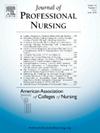Improving the evaluation of clinical competence in undergraduate students; evidence and technology: An integrative review
IF 2.8
3区 医学
Q1 NURSING
引用次数: 0
Abstract
Background
Assessment of clinical practice is integral to determining nursing students' knowledge, critical thinking, and overall clinical competency to ensure patients are receiving quality care. There are no best practice approaches to evaluating competency in undergraduate nursing students despite the necessity to attest to how students are meeting regulatory standards upon graduation. The use of technology in healthcare and post-secondary institutions has increased, however, within nursing education, technology use for clinical evaluation remains largely underused.
Purpose
This integrative narrative review aimed to synthesize literature on evaluating undergraduate nursing students' clinical competence and the role of technology in enhancing the assessment process.
Methods
An integrative review was conducted to inform quality improvement projects relative to the assessment of students' clinical performance in an undergraduate nursing program in Canada. Authors searched the Cumulative Index to Nursing and Allied Health Literature (CINAHL) database for articles relating to competency, clinical performance evaluation, clinical evaluation tools, formative and summative evaluation, and technology in clinical evaluation. The main questions guiding this review were: How is competence assessed in relation to undergraduate students' clinical performance? And, how can technology enhance the assessment of students' clinical performance?
Results
A total of 34 articles were included in this review. Current clinical evaluation processes use a combination of methods and tools to evaluate students' competence, however, there remains room for ongoing advancements. Adopting technology into the evaluation process can help students better understand competencies and learning outcomes, receive near real-time feedback from clinical instructors, and promote critical self-reflection. Technology has also reduced student and faculty workload with a more efficient and streamlined process. Further research is needed to understand how technology can best be incorporated into clinical evaluation processes.
Conclusion
Though under-researched, technology has been shown to be a valuable tool in the clinical evaluation process to promote student engagement in the assessment of clinical performance. In addition, considering factors such as the student and faculty relationship, preferences for feedback, and overall workload in the design of clinical evaluation processes is necessary.
改进对本科生临床能力的评估;证据与技术:综合评述
背景临床实践评估对于确定护理专业学生的知识、批判性思维和整体临床能力,以确保患者获得优质护理不可或缺。尽管有必要证明学生在毕业时是如何达到监管标准的,但目前还没有评估护理本科生能力的最佳实践方法。本综合叙述性综述旨在综合评估护理本科生临床能力的文献,以及技术在加强评估过程中的作用。作者在护理及相关健康文献累积索引(CINAHL)数据库中检索了与能力、临床表现评估、临床评估工具、形成性和总结性评估以及临床评估中的技术相关的文章。指导本综述的主要问题是如何评估与本科生临床表现相关的能力?以及技术如何增强学生临床表现的评估?目前的临床评估过程综合使用了多种方法和工具来评估学生的能力,但仍有不断进步的空间。在评估过程中采用技术可以帮助学生更好地了解能力和学习成果,从临床教师那里获得近乎实时的反馈,并促进批判性的自我反思。技术还能通过更高效、更简化的流程减轻学生和教师的工作量。结论尽管研究不足,但技术已被证明是临床评估过程中促进学生参与临床表现评估的重要工具。此外,在设计临床评估流程时,有必要考虑师生关系、反馈偏好和总体工作量等因素。
本文章由计算机程序翻译,如有差异,请以英文原文为准。
求助全文
约1分钟内获得全文
求助全文
来源期刊
CiteScore
4.80
自引率
8.00%
发文量
153
审稿时长
52 days
期刊介绍:
The Journal will accept articles that focus on baccalaureate and higher degree nursing education, educational research, policy related to education, and education and practice partnerships. Reports of original work, research, reviews, insightful descriptions, and policy papers focusing on baccalaureate and graduate nursing education will be published.

 求助内容:
求助内容: 应助结果提醒方式:
应助结果提醒方式:


